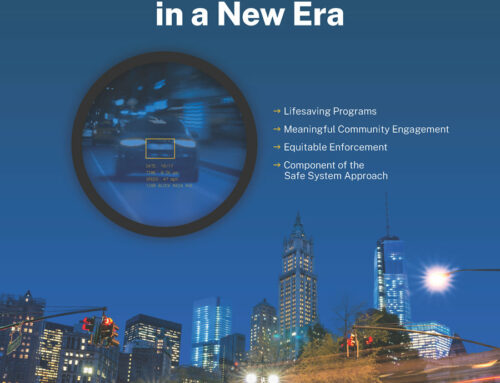In today’s automotive landscape, safety technology is taking center stage, with Automatic Emergency Braking (AEB) systems leading the charge. Among the frontrunners in this realm is Tesla, renowned for its advanced safety features. Let’s take a closer look into the world of AEB systems, focusing on Tesla’s Automatic Braking System and the impact it has on road safety.
The Effectiveness of Automatic Braking
Automatic Emergency Braking (AEB) systems, like the one found in Tesla vehicles, have proven to be significant in preventing collisions and minimizing their severity. Studies, including those by the Insurance Institute for Highway Safety (IIHS), have shown a remarkable 50% reduction in front-to-rear crashes with the use of AEB. While these systems excel at lower speeds and in favorable conditions, they may encounter challenges in detecting certain objects or in complex driving scenarios. Tesla’s AEB system, despite its effectiveness, is not foolproof and may not always prevent all collisions. Despite these limitations, AEB remains a valuable safety feature that plays a crucial role in enhancing overall road safety. It’s also important to note there have been instances in which drivers of vehicles equipped with Automatic Emergency Braking (AEB) systems have confidently credited their AEB systems with saving lives.
Industry-wide Adoption of Automatic Emergency Braking (AEB):
Automatic Emergency Braking (AEB) systems have become a cornerstone of automotive safety, prompting a widespread adoption across the industry. From economy cars to luxury SUVs, automakers are increasingly integrating AEB into their vehicle lineup to enhance road safety.
Automakers and Models with AEB:
- Audi: Models like the A4 Allroad feature AEB.
- BMW: Although specific models aren’t listed, BMW is known for incorporating advanced safety features.
- Ford/Lincoln: The Ford Expedition and various models from both brands come equipped with AEB.
- Honda/Acura: Vehicles such as the Civic and Accord offer AEB, with Acura models also featuring this safety technology.
- Hyundai/Genesis: Models like the Palisade and Santa Fe from Hyundai, along with the Genesis lineup, include AEB.
- Mazda: The CX-5 and Mazda3 come with AEB as part of their safety features.
- Mercedes-Benz: Known for its commitment to safety, Mercedes-Benz offers AEB across its range.
- Mitsubishi: While specific models aren’t listed, Mitsubishi has committed to including AEB in many of its vehicles.
- Nissan/Infiniti: Various models from both brands are equipped with AEB.
- Stellantis: Brands under Stellantis, including Chrysler, Dodge, Jeep, and Ram, as well as Alfa Romeo and Fiat, have incorporated AEB into many new vehicles.
- Subaru: Subaru is recognized for its EyeSight suite, which includes AEB.
- Toyota/Lexus: Models like the Camry, Camry Hybrid, and various Lexus vehicles come with AEB.
- Volkswagen: Volkswagen includes AEB in many of its models.
- Volvo: Volvo is known for its safety features, with AEB being a standard feature across its lineup.
Industry Commitment to AEB:
The automotive industry’s dedication to AEB is evident in a voluntary agreement among automakers to make AEB a standard feature in nearly all new vehicles by a specified timeline. Consumer Reports and the Insurance Institute for Highway Safety (IIHS) have applauded the life-saving potential of AEB, urging its widespread adoption across all vehicle segments.
The widespread adoption of AEB across various automakers underscores a collective commitment to leveraging technology for improved road safety. As the automotive industry continues to prioritize safety innovations, Automatic Emergency Braking stands out as a key player in enhancing driver and passenger safety on the roads.
Limitations and Considerations of Automatic Emergency Braking (AEB)
While Automatic Emergency Braking (AEB) systems are heralded for their potential to prevent collisions and enhance road safety, it’s important to understand their limitations and consider key factors when relying on this technology.
1. Detection Limitations:
AEB systems primarily rely on sensors, cameras, and radar to detect objects in the vehicle’s path. However, challenges arise when:
- Low Visibility Conditions: Heavy rain, fog, or glare can impair sensor abilities, affecting object detection.
- Small or Stationary Objects: AEB may struggle to detect small or stationary objects, such as debris on the road or animals.
2. False Alarms:
Sometimes, AEB systems can trigger false alarms, leading to:
- Unnecessary Braking: In scenarios where the system misinterprets normal driving conditions as a threat, it may apply brakes unnecessarily, causing discomfort to the driver.
3. Performance Variability:
The effectiveness of AEB systems can vary based on:
- Driving Conditions: High-speed scenarios, sharp turns, or abrupt acceleration may challenge the system’s response time and accuracy.
- Pedestrian and Cyclist Detection: Some AEB systems may not be as sensitive to detecting pedestrians or cyclists, potentially posing risks in urban environments.
4. System Deactivation:
- Driver Override: In certain situations, drivers may override AEB systems or deactivate them, either intentionally or due to system malfunctions, which can compromise safety features.
5. Maintenance and Calibration:
- Regular Maintenance: Ensuring proper maintenance and calibration of AEB components is crucial to maintaining optimal system performance and accuracy.
Real-world Examples:
- Scenario 1 – Low Visibility: In heavy rain, AEB sensors may struggle to detect objects on the road, potentially limiting their effectiveness.
- Scenario 2 – False Alarms: AEB triggering a sudden emergency stop due to misinterpreting a harmless roadside object as a collision hazard.
Understanding these limitations and considerations is essential for drivers utilizing AEB systems. While AEB technology is a valuable safety tool, it’s important to remain attentive and aware of its capabilities and constraints to maximize its effectiveness in preventing collisions and promoting safety.
Conclusion
As we consider the changing landscape of automotive safety technology, Automatic Emergency Braking (AEB) emerges as a great example of innovation and progress in enhancing road safety. While AEB systems, including those found in Tesla vehicles, have demonstrated significant potential in preventing collisions and minimizing their impact, it’s also important to acknowledge their limitations and use them as complementary aids to attentive driving practices.
By recognizing the detection challenges, false alarm possibilities, performance variations, and the importance of proper maintenance and calibration, drivers can harness the full benefits of AEB systems while understanding their boundaries.
The industry-wide adoption of AEB across various automakers underscores a collective commitment to leveraging technology for safer roads. As we look towards the future, it’s clear that AEB, alongside other advanced safety features, will continue to play a pivotal role in mitigating risks and protecting lives on our highways.
Remember, while technology can be a powerful ally on the road, responsible and attentive driving is critical. By combining advanced safety features like AEB with vigilant driving habits, we can pave the way for a safer and more secure driving experience for everyone.






